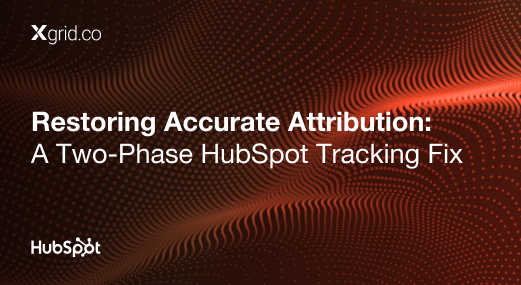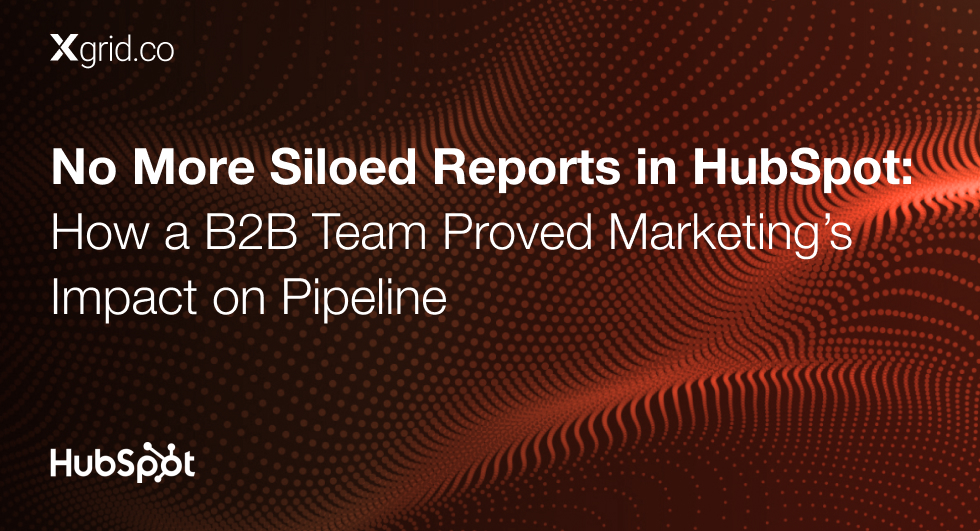How a B2B Platform Fixed Broken HubSpot Attribution and Uncovered the True ROI of Their Campaigns
Background: Blind Spots Were Breaking the Funnel
Our client, a B2B platform operating in the digital fundraising and engagement space, relies heavily on HubSpot and Salesforce for marketing execution and performance reporting. Their marketing operations team needed reliable attribution to measure campaign ROI, but tracking gaps across domains were creating significant blind spots.
The Attribution Problem: What Was Going Wrong
The client managed multiple subdomains and digital assets spread across WordPress and HubSpot, leading to broken UTM tracking and inaccurate attribution. Marketing teams were unable to capture original traffic sources due to:
- UTM parameters dropping during navigation between domains.
- Inconsistent or missing values in critical fields like “First Referring Site” and “Original Source.”
- Salesforce overwriting HubSpot UTM fields with null values due to validation issues
- Form submissions failing to link to sessions because of cookie loss.
These issues led to poor visibility into traffic sources, misaligned funnel metrics, and unreliable campaign reporting. The team lacked clarity on what was truly influencing MQLs and conversions.
The Fix: A Cross-Domain HubSpot Attribution Framework
Xgrid conducted a comprehensive audit of the tracking ecosystem across WordPress, HubSpot, and Salesforce. The goal was to create a cross-domain UTM infrastructure that ensured data integrity, consistency, and reporting accuracy.
Implementation Steps
-
Cross-Domain Tracking Setup
- Enabled cross-domain session tracking in HubSpot.
- Added all key subdomains (e.g., info.domain.com, go.domain.com) to HubSpot’s advanced tracking settings.
- Verified cookie persistence and session continuity using incognito testing.
-
Cookie and Script Updates
- Developed a custom JavaScript snippet to capture UTM parameters from landing page URLs and store them in browser cookies
- Deployed this script on WordPress landing pages to retain values like utm_source, utm_medium, and utm_campaign
-
HubSpot Workflow Enhancements
- Created a new custom property utm_original.
- Built workflows to copy the last captured UTM values into this property at the point of form submission — ensuring they were retained even when default fields were overwritten.
-
Salesforce Sync Optimization
- Identified faulty sync behaviors where Salesforce was resetting fields to null.
- Worked with the client’s Salesforce team to fix validation rules and field mapping errors.
- Ensured hidden UTM fields on forms mapped correctly to Salesforce fields via HubSpot integrations.
Results: Attribution Restored, Insights Reclaimed
✅ UTM parameters were successfully retained across domains, restoring full visibility into lead source data.
✅ Campaign attribution improved significantly, giving the team clearer insights for smarter budget allocation.
✅ HubSpot and Salesforce now reflect consistent, synchronized campaign and source data.
✅ The client can now confidently track performance by original source, campaign, and channel — enabling more strategic budget allocation.
If you’re facing similar HubSpot attribution or reporting challenges, our HubSpot Consulting Services can help. From fixing broken tracking to optimizing integrations, we specialize in giving B2B teams reliable data they can act on.
Key Takeaways
- UTM tracking integrity is vital for accurate attribution in multi-touch marketing environments.
- Combining cookie-based tracking with HubSpot automation ensures consistency across sessions and systems.
- Synchronizing source data across HubSpot and Salesforce eliminates major reporting blind spots.
Best Practices to Borrow
- Always test cookie behavior and cross-domain tracking in incognito mode before launch.
- Use custom UTM fields to preserve source data without relying solely on HubSpot system fields.
- Regularly validate Salesforce sync behavior and hidden field mapping to prevent silent data loss.




